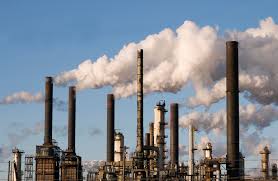|
Getting your Trinity Audio player ready...
|
Kudzai Taruvinga
Industrialisation is the period of social and economic change that transforms a human group from an agrarian society into an industrial society. This involves an extensive re-organisation of an economy for manufacturing.
Industrialisation, with strong linkages to domestic economies, will help African countries achieve high growth rates, diversify their economies and reduce their exposure to external shock. This will substantially contribute to poverty eradication and wealth creation.
The SADC has implemented several activities and programmes to promote industrialisation. One of them is peace, security, and good governance. In the absence of peace, education, and health structures break down, systems to promote infrastructure disintegrate and legal commerce is crippled. Critically peace also frees up resources both financial and human, that would otherwise be diverted to controlling (or creating) violence.
Good governance can reduce risks, and enable faster and safer growth. It can also improve reputation and foster trust. Crucially, good governance can ensure that peace lasts by addressing the root causes of tension and making sure that all citizens feel that their needs and interests are fairly presented.
Another programme was industrial development and market integration. Market integration provides several social benefits including broadening the range of financial services and investment opportunities available to consumers and increasing competition in the provision of those services.
Industrial development creates job opportunities at higher skill levels. It facilitates more useful links across the mining, agricultural, and service sectors between rural and urban economies and across consumer, intermediate, and capital goods industries.
Gender equality and women empowerment was another programme by SADC to promote industrialisation. Gender equality is not only a pressing moral and social issue but also a critical economic challenge. A society attains better development in all aspects when both genders are entitled to similar opportunities. Equality prevents violence against women and girls.
Women’s empowerment is essential to a woman’s sense of self-worth. Expanding women’s opportunities means more and better jobs for women across a wider range of sectors, a business climate that supports women in starting and growing businesses and building their management and entrepreneurship skills.
This results in a financial sector in which commercial banks and microfinance institutions provide women with effective access to a range of financial services and products. These are tailored to their needs, including especially credit and savings instruments. Also in times of high food and fuel prices, greater livelihood security for women in rural areas and vulnerable environments.
Another programme was food, agriculture, and natural resources. Agriculture in SADC is a prerequisite for poverty reduction as well as a key supplier of raw materials for the industrialisation of the region. The Regional Agricultural Policy (R.A.P) has enhanced agricultural production and competitiveness and also improved regional and international trade and access to markets of agricultural products.
Last but not least was the social and human capital development. Human capital consists of the knowledge, skills, and health that people invest in and accumulate throughout their lives, enabling them to realise their potential as productive members of society.
Positive and negative interactions between businesses, society, and individuals are crucial to good decision-making, yet rarely do we measure their impact and value to organisations. Social and human capital accounting is a way to do so.
Social capital refers to the institutions, relationships, and norms that shape the quality of a society’s social interactions. Increasing evidence shows that social cohesion is critical for societies to prosper economically and for development to be sustainable.
By nature, regional value chains involve the unbundling of factories across international borders so that individual tasks are performed in different conditions, which enjoy a competitive advantage in a specific activity.
The focal point of the SADC Industrialisation Strategy and roadmap (2015-2063) is participation in regional and global value chains. The strategy sets out three preferred growth paths towards industrialisation in the region. The paths are agro-processing, mineral beneficiation, and industry and service-driven value chains.
The three paths are mutually inclusive, encompassing the combination of downstream value addition and backward integration or the upstream provision of inputs, intermediate items, and capital equipment.
Next we look at remoteness. Participation in global value chains is constrained by geography. There is a remoteness of major global hubs, thereby strengthening the argument for emphasising the need for regional value chains. Distance and weak connectivity have adverse effects on costs, delivery times, and network flexibility. These are some of the barriers that are impeding industrialisation.
Another priority is the availability of and access to resources. Linked to growth potential is availability and access to resources. Aside from raw materials and intermediate inputs, the crucial elements of successful value chain participation are financing, skills, technology, infrastructure, and logistics.
In my own perspective, I presume that for industrialisation to be a success, it should involve indigenous people. Industries should be located in areas of their sources also.
Kudzai Taruvinga is a lower-six student at Marondera High School






